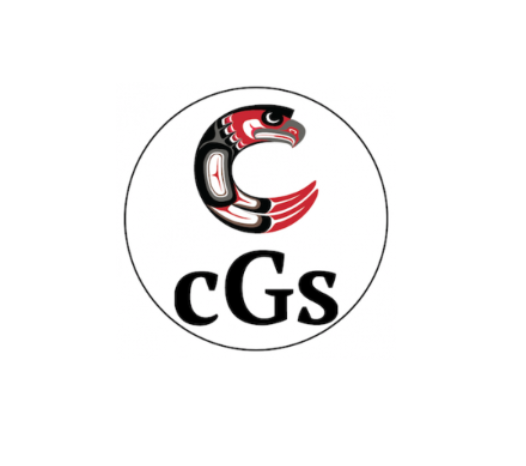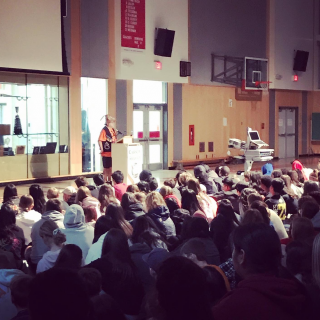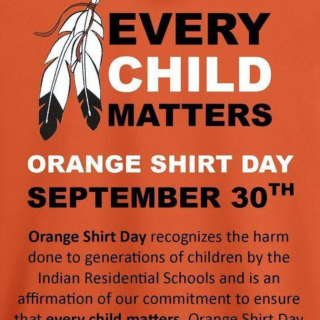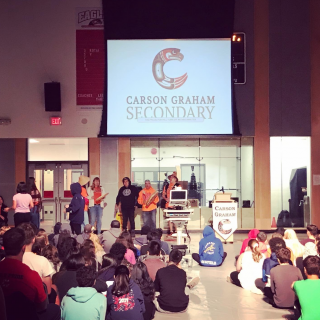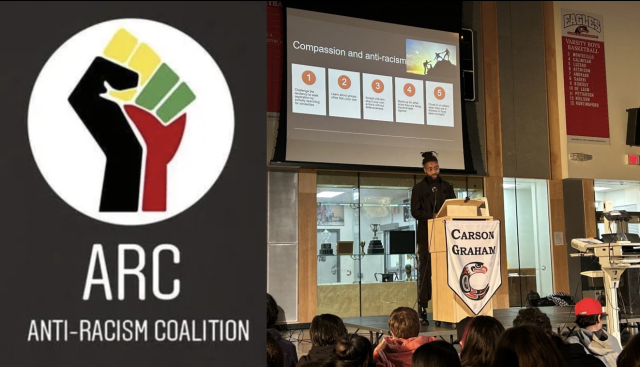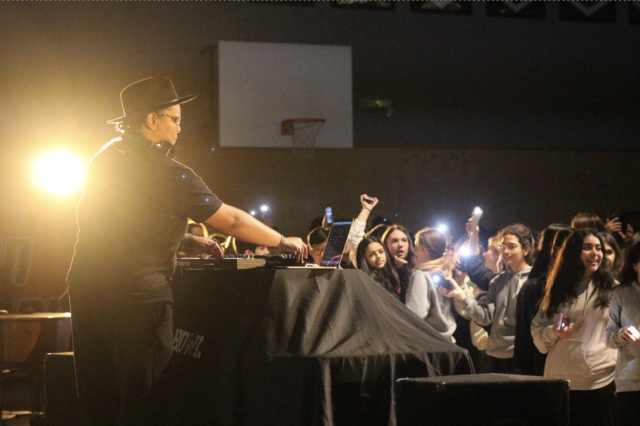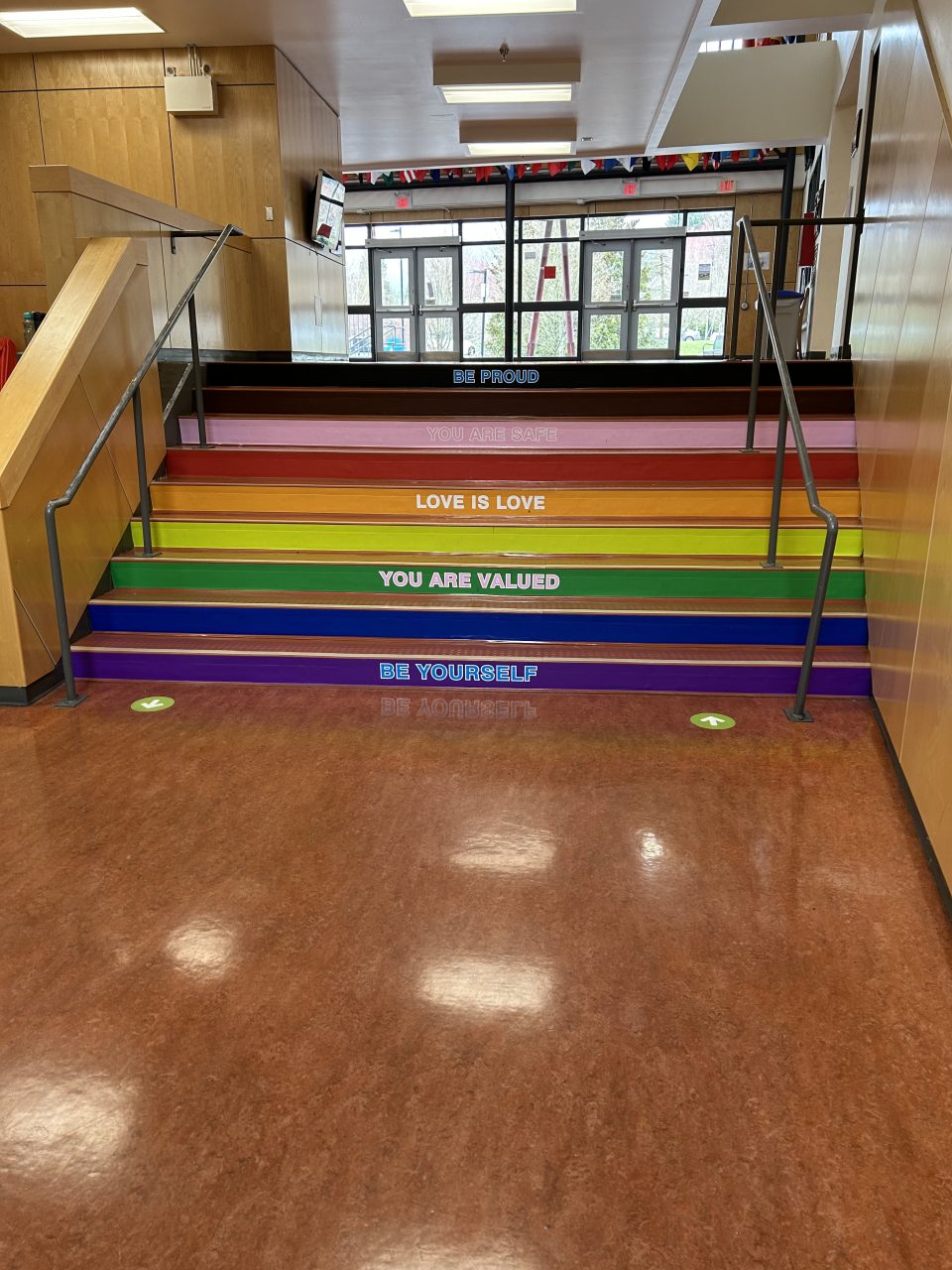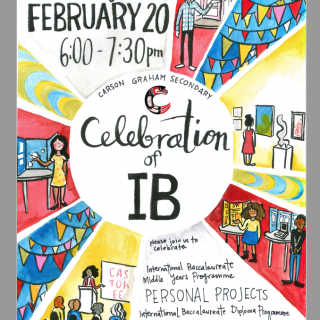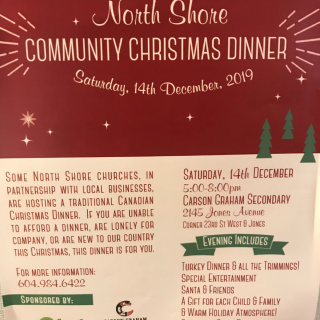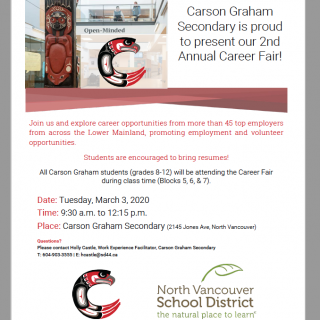Vision to Goal Setting
What is our Vision for Learning?
What is our “raison d’etre”? The visioning process encompasses reflecting on our core mandate and purpose, articulating our guiding beliefs and shared values, and goal-setting for a preferred future. In the North Vancouver School District, we envision a school-based engagement process that highlights the strengths in our school community while identifying areas for future focus and development.
We are the House of Eagles; and we are a community. We acknowledge and thank the Coast Salish peoples on whose traditional territories the North Vancouver School District resides. We express our gratitude to the Squamish and Tseil Waututh Nations as we value the opportunity to learn, live and share educational experiences on this land.
We are on the North Shore. We are surrounded and embraced by the two sisters who watch over us and remind us of how peace came to the land. We live in the rainforest which provides a wealth of resources and opportunities that are envied around the world, where takaya roams and black mixalh (may hath) is revered. We are surrounded by oceans and coastal ecosystems where Yewyews (yoyos) is king and stsuw’l’7 (soo quat) provides.
We are North Vancouver from the top of Grouse Mountain to the Lonsdale Quay, from Deep Cove to the Lions Gate Bridge. We are North Vancouver. We are part of the Lower Mainland. Our community reaches from the shores of the ocean to the Fraser Valley and beyond. We are Canadian. We make up the fabric of the Canadian landscape. As an IB school, we are part of the global community; and we have a role to play in bettering our world through intercultural understanding and respect.
“This is our story.”
Carson Graham Secondary is an International Baccalaureate (IB) Continuum School that offers both the IB Middle Years Programme (MYP) and the Diploma Programme (DP). As an IB school, we are part of the global community and have a role to play in bettering our world through intercultural understanding and respect.
Carson Graham serves its diverse student population with an array of innovative program offerings within our state of the art facility. Our dedicated and experienced faculty are committed to excellence, making Carson Graham a leading school in both the North Shore and province.
We are lucky to work with a population as diverse as Carsonâs student body. We have learners of all abilities, interests, experiences and aspirations; and they each bring joys and challenges to our school building that enrich our lives daily.
The diversity of our student population is mirrored in the number and types of programs we offer to meet their needs. We draw from more feeder schools than any other high school in the District and each of our feeder schools has its own unique personality.
The diversity is also mirrored in the diversity of our staff. Our teachers, for example, bring 1150 years of experience to this school.
We are more than the sum of our parts. Each member of our staff- teaching, administrative and support staff brings their own unique experiences and points of view, which adds to the richness of our community. Whether we’re homegrown or weâve found our way here from other places, whether we’ve been around a while or are just starting out, our differences- differences in styles, in opinions, in interests, in approaches – are what make us stronger and our students benefit from it all.
Our community speaks more than 30 different languages in their homes. Each year, our English language learners come to us from around the world. We welcome international students from continents across the globe.
We are a creative community, a place that celebrates and appreciates the power of music; a community that understands the positive impact that the performing arts have on a personâs confidence; a community that produces thousands of creative pieces of art with each passing year. We are a community of designers- where we plan and try and think and try again. In fact, on average, 2000 students take a design course. How does that happen when we are a student population of fewer students than that? Students take multiple design classes which means our design teachers build relationships with nearly every single one of our students.
We are an active community. We have strong PE, conditioning and dance programs- each of which helps foster in our students a healthy balanced lifestyle.
We have a rich tradition of athletics. Nearly one-third of our students participate in at least one sport through our school. On average annually, 80 adults devote their personal time to coaching.
We are a community of service. Our student body devotes approximately 20 000 hours per year to giving back to the local and global community. They do this under the guidance and direction of volunteer teachers from our own staff.
We strive for excellence in all endeavours, encourage personal and social responsibility, respect diversity and work to develop a life long commitment to learning.
Our aim is to develop inquiring, knowledgeable, confident and caring students who create a better world through intercultural understanding and respect.
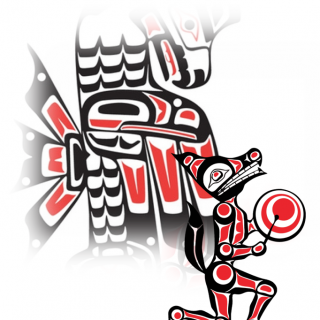
Planning & Implementation
What is our Action Plan?
Once goals have been identified, an implementation plan is developed that highlights strategies, activities, professional resources, and opportunities for professional development. Generally, implementation plans span one to three years and articulate stages of awareness, partial implementation, and full implementation or goal attainment. A key consideration in the implementation process is defining indicators of progress.

The Planning Stage
The Carson Graham community is continually working to refine our specific goals and our action plan. The School Planning Committee is made up of representatives from our teaching staff, support staff, parents, students and administration. Although we do come together at specific meetings focused on this topic, school planning at Carson is a continual process that involves ongoing conversations that occur in numerous contexts and with a wide variety of stakeholders. We welcome the opportunity to have all members of the Carson community involved in the creation of our school goals and will continue to monitor and modify them based on the attainment of our initiatives and the dynamic needs of our students.
This year, our overarching themes are Collaboration, Community and Connections. Quite simply, our main goal is to increase the engagement in these three areas for all students, staff and parents at Carson. Specifically, we want to:
- Increase our sense of belonging by strengthening the culture of diversity, equity and inclusion.
- Increase the engagement of students by focusing on innovative instructional practices and by maintaining an inclusive and welcoming environment.
These themes tie in with the North Vancouver School District’s strategic goals (Student-Centred Education, Innovative Instruction, Welcoming & Inclusive Culture, Mental Health & Well-Being, Truth Healing & Reconciliation and Environmental Stewardship).
Our themes also relate to the First Peoples Principles of Learning:
- Learning ultimately supports the well-being of the self, the family, the community, the land, the spirits, and the ancestors.
- Learning is holistic, reflexive, experiential, and relational (focused on connectedness, on reciprocal relationships, and a sense of place).
- Learning involves generational roles and responsibilities.
How Will We Implement This?
Increase our sense of belonging by strengthening the culture of diversity, equity and inclusion.
Through universal, targeted and intensive activities, we will encourage all members of our school community to examine systems and structures through the lens of diversity, equity and inclusion.
Increase the engagement of students by focusing on innovative instructional practices and by maintaining an inclusive and welcoming environment.
We will encourage all staff to teach to all students.
Staff, parents and students will work together to create a sense of belonging. Staff will be encouraged to make explicit connections to this plan both in and out of the classroom. Opportunities to grow in this area will be a reoccurring theme during staff meeting, collaboration time and professional development.Â
The PAC will use a ‘sense of belonging’ as a recurring theme in their work.
Student clubs and initiatives will also keep this theme as the backbone of their actions.
A sudden move to remote learning last spring made us recognize more than ever the need for creating authentic opportunities for student engagement. Staff, students and families will work together this year to build connections and create a sense of belonging.
Engagement
This year, we have chosen to focus on Engagement as an overall theme for the year. As a result, staff, students and the community as a whole are using this goal as the underlying connection for activities this year.
As a means of deepening Carson engagement, we will continue to participate in the process of reconciliation by Indigenizing our school and strengthening our relationship with the Squamish, Tseil-Waututh and other First Nations, Metis and Inuit peoples in our community. Carson Graham Secondary will continue to provide an engaged environment for all learners by focusing on Modernizing the Curriculum, complex learners, Aboriginal Education, Social Emotional Learning, and Career Development.
Staff
We have identified student connectedness and engagement as an area of focus and are working towards this goal. This came about as a result of staff observations and discussions, along with McCreary Survey results. Staff will investigate student capacity through the lens of Trauma-Informed Practice and explore varied instructional practices to increase student engagement and connectivity.
Staff will continue to focus on indigenizing the curriculum and embedding the First Peoples’ Principles of Learning.
Additionally, staff will prioritize not only on student engagement for this school year, but also their own. Both in 2017 and again in 2019, employees across the North Vancouver School District completed an Employee Engagement Survey. During both survey administrations, over eighty per cent of employees took part, resulting in a rich data set from which to draw information. Flex Surveys, an external survey company, analyzed the data and shared the results back with all the partner groups (including CUPE, NVTA and NoVA) as well as at an individual school level.
Students
This year, students will continue to have an increased role in the School Planning process. They will be given the opportunity to build on the success of last year’s Town Hall meetings. Here, students will continue to share thoughts and feedback on all things Carson, thereby creating a space where all learners are engaged. Increased participation is school clubs and student-sponsored events will be valued.
Additionally, students will continue to have increased opportunities to participate and engage in their own learning. As part of the Appraoches to Learning self-assessment process, students are learning to identify and assess their strengths and areas of growth, set goals, regularly assess their progress in relation to their goals and establish a plan to reach their goals.
The Community
Opportunities for community partnerships are welcomed at Carson Graham. We appreciate the expertise and guidance that exists outside of the typical school setting. This year, the PAC will be presenting a series of parent presentations that will support parents with the engagement of their own children. These will include Vancouver Coastal Health representatives and Screenagers: The Next Chapter. Additionally, the Carson FOS will sponsor a prentation called Parenting in a Digital World. Invitations for community stakeholders to collaborate with Carson will be increased. Parents, the PAC and the community as a whole will play a larger role in school engagement and School Planning.
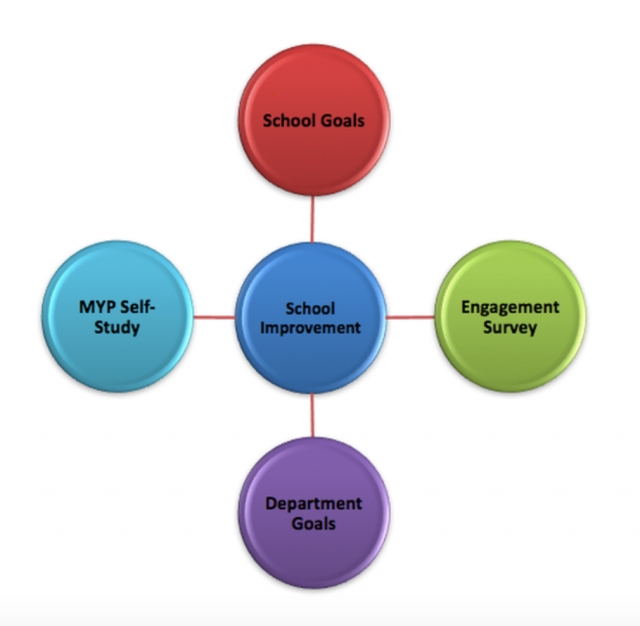
School Directions
Last year’s school planning process gave all staff a voice. The community collaborated to create directions to guide our planning and growth. In 2017-2018, the focus of our school planning was to build upon, deepen, and refine the previous plan.Â
This year, we used the directions that came from the original school plan narrative to provide a framework from which to build. As a school, we used the MYP Self-Study, the Engagement Survey, and department goals to provide clarity and actionable direction from which to move forward. Â Â
In 2017-2018, we underwent an MYP Self- Study where staff collaborated to develop specific action plans to improve teaching and learning in our IB Middle Years Programme. This year-long process allowed staff to reflect and refine curriculum, assessment, instruction, and collaboration.
Each department collaborated to develop a specific learning goal and targets that align with our original 5 directions. We designed our learning goals to be specific, measureable, and attainable.
Also in 2017-2018, under the leadership of a school committee, we used data generated from the District Engagement Survey to develop two specific goals connected to feedback and recognition.
5 Directions (School Goals)
Our five directions from 2016-2017 that guide our planning and growth process moving forward:
To strengthen our capacity as educators and further deepen our understanding of curriculum, instruction and assessment.
To continue to broaden our knowledge of concept based teaching and learning.
To increase our reflectiveness.
To continue to participate in the process of reconciliation by Indigenizing our school and strengthening our relationship with the Squamish, other First Nations, Metis and Inuit peoples in our community.
To strengthen the connections between us and our curricular areas for the benefit of our learners.
MYP Self-Study (Action Plan)
In 2017-2018, we underwent an MYP Self- Study where staff collaborated to develop specific action plan items to deepen our understanding of IB Philosophy and improve our leadership, structure, curriculum, teaching, learning and assessment. This year-long process allowed staff to reflect, refine and adjust our MYP implementation.
Although we developed many different specific action items from our Self-Study in each of the four standards, we have highlighted two themes from each standard:
Standard A :Philosophy
attend and present at the IB Conference of the Americas to make connections with other IB World Schools
increase promotion of responsible action by our students within and beyond the school community
Standard B; Organization
continue to optimize our collaborative and staff meeting times to increase the ability for teachers to work together on our goals and directions
increase our language acquisition course offerings annually
Standard C: Curriculum
C1: Collaborative planning
continue to work towards teaching to diversity with respect to planning, instruction and assessment
build cross-curricular and interdisciplinary understanding of teaching and learning experiences
C2: Written curriculum
provide time for students and staff to reflect and respond
clarify the knowledge concepts skills and attitudes to be developed school wide
C3: Teaching and learning
increase student engagement in reflecting on how, what and why they are learning in order to support them to become agents who are actively responsible for their own learning
continue to increase our knowledge, application and delivery to support student diversity
C4: Assessment
standardize our understanding and application of criteria
increase and authenticate student self-assessment to build greater ownership over their own learning
Department Goals
Each department collaborated to develop specific learning goals and targets that align with our 5 directions. These learning goals are designed to be specific, measureable, and attainable.
Arts:
Focus on sharing learning and celebrating the arts. Make arts more visible within the school. Collaborate to support interdisciplinary work within the arts.
Design:
Place greater emphasis on the design cycle. Place greater emphasis on how students evaluate their own process (and product). Develop greater self-evaluative process. Make this common amongst design teachers.
Individuals and Societies (Social Studies):
Improve studentsâ ability to conduct an investigation as per the research process.
Language Acquisition:
Come together regularly and work to better understand the three different facets of the language acquisition department (French, Spanish & Squamish). Collaborate and share to understand each otherâs perspectives, methodologies and world views. Grow a database of strategies and reflections to enhance student learning and link it to Managebac in the assessment section. Revisit the strategies as a department on a monthly basis.
Language and Literature:
Define grade specific literacy skills within Language and Literature classes by using pre-established criterion to ensure consistent learning experiences among classes and grades.
Math:
Standardize assessment across the MYP years to achieve a more consistent system of assigning levels.
Physical and Health Education:
Improve the reflection process in order to increase student ownership and understanding by having students reflect in writing on the âFit and Smart Principlesâ at the end of each term. This will encourage them to asses and take greater ownership over their personal fitness, the fit smart principles, and their effort and attitudes towards PHE. Take formal time to discuss student reflections- what went well, what was tricky and what could we do differently.
Science:
Develop thinking skills through lab work and inquiry. Critical Thinking: Numeracy â focus on highlighting the math in science and developing numeracy skills; Critical Thinking: Labs â focus on scaffolding of graphing skills; Creative Thinking: Imagination and creativity related to design labs
Engagement Survey
After receiving the District Engagement Survey results in the fall of 2017, we established an Engagement Survey Committee that included Teachers, CUPE and Administration. The purpose of this committee was to lead a school wide data guided inquiry to establish two school goals to increase staff engagement. The committee led a number of staff meeting exercises that included: revealing the data to staff, working with staff to assess how the data aligned with our internal beliefs, collating three themes for celebration and three opportunities for growth, and collected staff feedback and actionable suggestions for each goal.
As a committee, we established two teacher chairs to lead and implement a plan focusing on feedback and recognition. As a school, we are very proud of the work that is being done in these areas.
To increase our internal staff recognition and work-related value at Carson Graham SchoolÂ
To increase the quality and specificity of the feedback we receive with respect to our overall job performance.
Moving Forward
Moving forward, we will use the Five Directions, MYP Self-Study, Department Learning Goals, and the Engagement Survey to shape our practice and direction. This planning process has provided us with a clear road map and actionable goals from which to enhance our students’ experiences.
School Directions
The original 2016-2017 school planning process gave all staff a voice. The community collaborated to create 5 directions to guide our planning and growth:
- To strengthen our capacity as educators and further deepen our understanding of curriculum, instruction and assessment.
- To continue to broaden our knowledge of concept based teaching and learning.
- To increase our reflectiveness.
- To continue to participate in the process of reconciliation by Indigenizing our school and strengthening our relationship with the Squamish, other First Nations, Metis and Inuit peoples in our community.
- To strengthen the connections between us and our curricular areas for the benefit of our learners.
Monitor Evaluate & Adapt
What are our Indicators of Progress?
The plan developed by the school community should clearly outline how progress on each goal will be monitored and evaluated. Many different possible indicators could be used depending on the nature of the goal and the type of progress the school wishes to focus on. Schools can use diverse indicators such as, surveys for student or parent feedback, information from classroom teachers and specialist teachers, student data and testing to name just a few. Using different types of indicators could allow schools to monitor progress in different ways.
Throughout the year we will collect evidence of our growth qualitatively and quantitatively. Our goals, objectives and strategies will be monitored and evaluated on an ongoing basis.
For the goal of increasing our sense of belonging by strengthening the culture of diversity, equity and inclusion, we will look at the following:
- Anecdotal evidence from students, staff, PAC, and community partners
- A scan of our courses, classroom resources and clubs that are focused on diversity, equity and inclusion
- A comparison with past years of the number of learning opportunities focused on diversity, equity and inclusion (examples being guest speakers, field trips and special events)
The goal of increasing the engagement of students by focusing on innovative instructional practices and by maintaining an inclusive and welcoming environment will be measured by analyzing the following data:
- Attendance data
- Survey Data (eg: Youth Development Instrument survey; Middle Years Development Instrument survey; Ministry Student Learning surveys; Preventer)
- Course retention and completion data
- Anecdotal evidence from students, staff, PAC, and community partners
Communicating Progress
How do we Communicate our Progress?
The school planning process is intended to support an ongoing dialogue within the community of learners to promote understanding, respect, and shared values. Communicating a school’s vision, values, accomplishments, and future directions enable dialogue. Ultimately, schooling is a foundation to democracy and prepares students to be engaged citizens. An important feature within a community of learners is continual communication about what we value most.
Over the course of the school year we will endeavour to communicate the progress of our goals, both formally and informally. Communication will include:
- Conversations during Staff Meetings and Staff Collaboration (planning, implementing, reflecting, etc.)
- Reviewing data sets such as the Ministry Student Learning Survey and the McCreary Adolescent Health survey
- Sharing at PAC meetings and in parent communication
- Sharing at student grade assemblies
- Sharing updates to the School Planning site
Black History Month School-Wide Assembly
Carson staff and students worked together to host our first Black History Month Assembly: Black History, Black Futures.
John Nweke of ARC Vancouver spoke to our students about how their actions can allow them to be allies rather than bystanders.
DJO SHOW (Orene Askew) finished off the event by sharing her story and how her identities have shaped her activism and career path before spinning some tunes for a dance party.
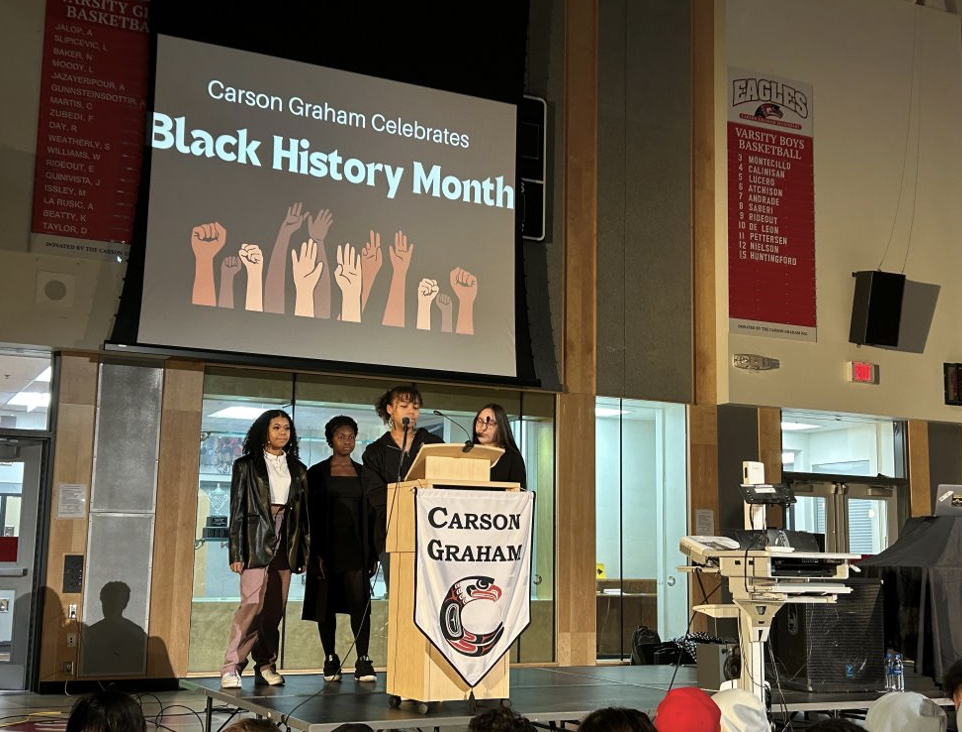
Pride Staircase a Symbol of Diversity at Carson
The installation of our rainbow staircase symbolizes our commitment to making Carson more welcoming to all LGBT2SQIA+ community members and allies, and a move towards inclusion and representation.
Climate Action
The Squamish Nation engaged Carson youth in the development of their Climate Action Strategy. The school worked with staff at the Squamish Nation and CityHives’s CityShapers in Schools program to provide a unique opportunity to teenage Squamish youth in the development of the strategy.

National Day for Truth and Reconciliation
Carson Graham recognizes this as a day to listen and learn as we mourn with survivors of residential schools, their families and communities. We encourage everyone to spend time listening and learning about the tragic history of residential schools and their ongoing impact on society.

School-Community Partnerships
Latest Progress & Updates
“Progress lies not in enhancing what is, but in advancing towards what will be.”
-Lebanese author Khalil Gibran
